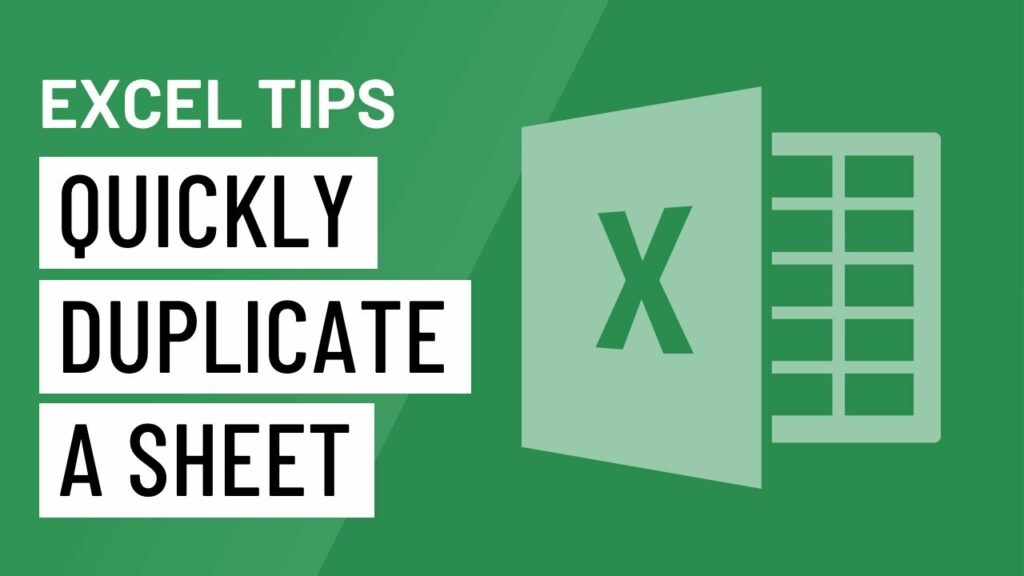Effortless Replication: A Comprehensive Guide on How to Quickly Duplicate a Sheet in Excel

Introduction:
Microsoft Excel, a cornerstone in data analysis and management, provides users with an array of features to streamline various tasks. One common requirement in Excel is the need to duplicate sheets for different purposes, such as creating backups, conducting what-if analyses, or preserving data integrity. In this extensive guide, we will explore the intricacies of quickly duplicating a sheet in Excel, unraveling multiple methods and techniques. Understanding how to duplicate sheets efficiently empowers users to navigate complex workbooks with ease and maintain an organized and versatile spreadsheet environment.
I. The Need for Duplicating Sheets:
A. Data Backups and Versioning:
- Duplicating sheets serves as a safeguard for data backups.
- Users can create multiple versions of a sheet to preserve historical data.
B. What-If Analyses:
- Duplicating sheets facilitates what-if analyses without affecting the original data.
- Users can experiment with different scenarios while retaining the baseline information.
C. Preserving Data Integrity:
- Duplication is essential for preserving the integrity of data during various operations.
- Users can create duplicates to isolate data for specific analyses or changes.
II. Basic Methods for Duplicating a Sheet:
A. Manual Copy and Paste:
- Right-click on the sheet tab you want to duplicate.
- Select “Move or Copy.”
- Choose the destination for the duplicate sheet.
- Check the “Create a copy” option and click “OK.”
B. Dragging the Sheet:
- Hold down the “Ctrl” key.
- Click and drag the sheet tab to the desired location while holding down the “Ctrl” key.
- Release the mouse button to duplicate the sheet.
III. Quick Shortcuts for Duplicating Sheets:
A. Keyboard Shortcut:
- Right-click on the sheet tab to be duplicated.
- Hold down the “Ctrl” key.
- Press “Shift” and drag the sheet to the desired location.
- Release the mouse button and then release the “Ctrl” and “Shift” keys.
B. Using the Ribbon:
- Navigate to the “Home” tab in the Excel Ribbon.
- Click on “Format” in the “Cells” group.
- Select “Move or Copy Sheet.”
- Choose the destination and check the “Create a copy” option.
IV. Advanced Techniques for Duplicating Sheets:
A. Duplicating Multiple Sheets:
- Hold down the “Ctrl” key.
- Click on the sheet tabs you want to duplicate.
- Follow the steps for manual copy and paste or use the shortcut method.
B. Duplicating Sheets with Formulas:
- Use the “Copy Worksheet” option in the Ribbon.
- Select the destination workbook and choose “Create a copy.”
C. Duplicating Sheets with VBA:
- Users familiar with Visual Basic for Applications (VBA) can automate sheet duplication.
- Create a simple VBA macro for duplicating sheets with custom settings.
V. Troubleshooting and Common Challenges:
A. Links and References:
- Duplicating sheets may lead to issues with external links and references.
- Update links manually or use the “Edit Links” option to address any discrepancies.
B. Cell References in Formulas:
- Formulas in duplicated sheets may retain original references.
- Adjust formulas as needed to reflect the correct cell references.
VI. Conclusion:
Duplicating sheets in Microsoft Excel is a fundamental skill that enhances data management and analysis. This comprehensive guide has explored basic methods, quick shortcuts, and advanced techniques for quickly duplicating sheets in Excel. By mastering these methods, users can efficiently create backups, conduct what-if analyses, and preserve data integrity within their workbooks. Embrace the versatility of Excel’s sheet duplication capabilities, experiment with different scenarios, and elevate your spreadsheet proficiency by seamlessly creating and managing duplicate sheets with ease.




